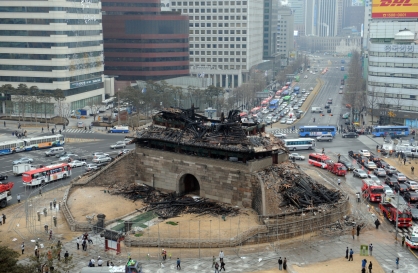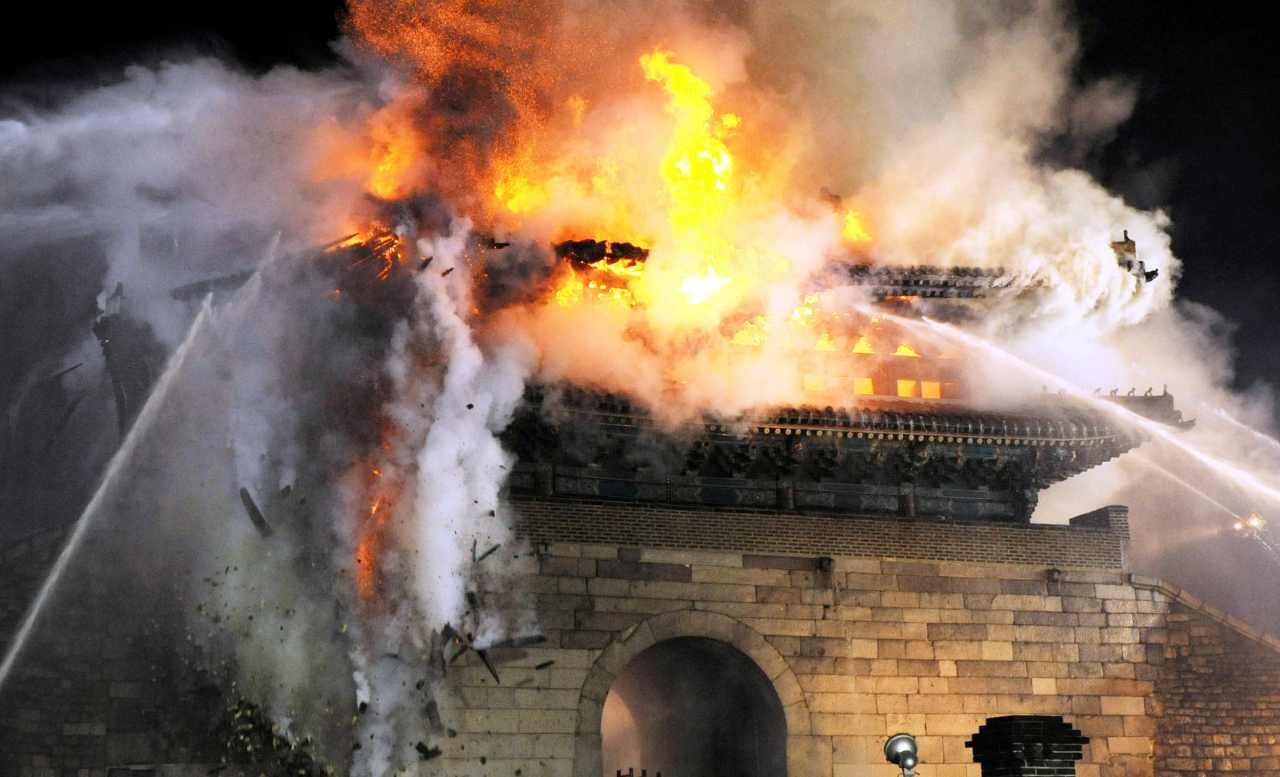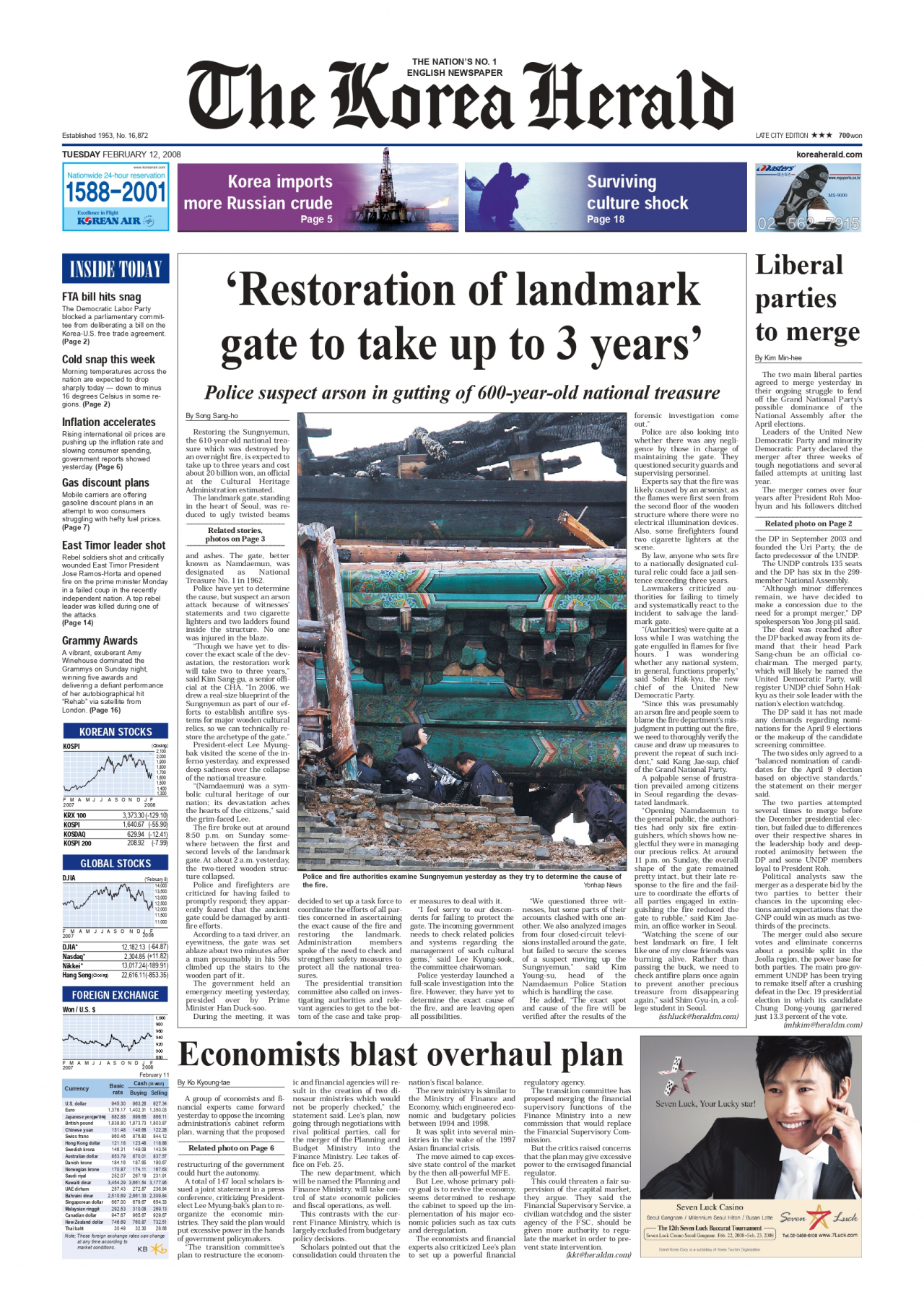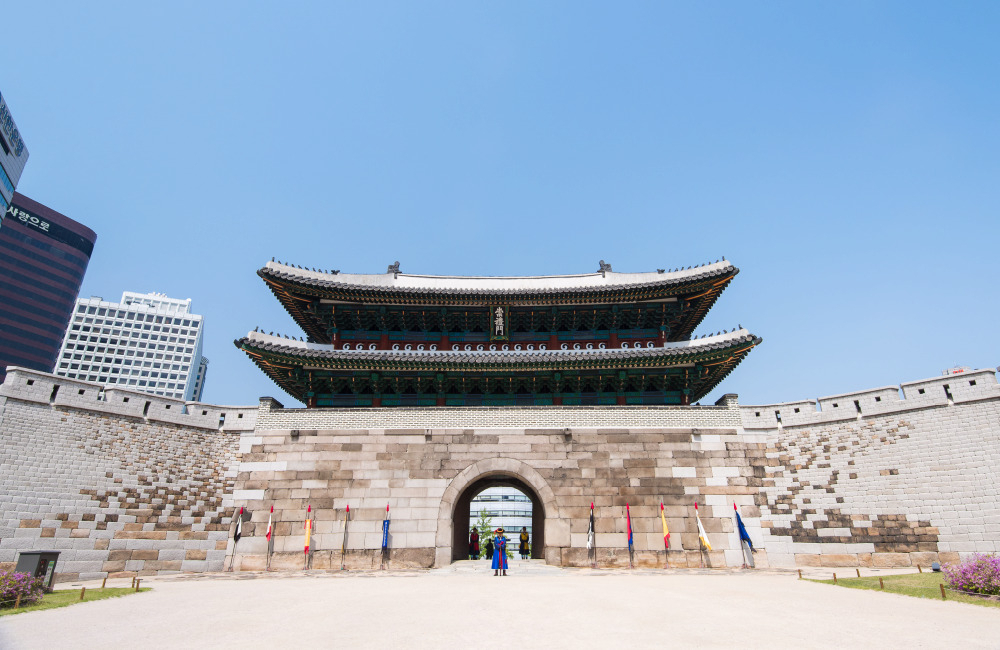Most Popular
Korean History
-
1
2014 ferry disaster left scars that never healed

-
2
In 2012, K-pop makes leap from 'Gangnam' to the world

-
3
Deadly sinking of Navy ship in 2010 marks worst postwar military disaster

-
4
In 2008, Korea's National Treasure No. 1 went down in flames

-
5
In 2005, science world’s biggest scandal unravels in Seoul

[Korean History] In 2008, Korea's National Treasure No. 1 went down in flames
2008 arson attack on Sungnyemun lays bare the vulnerability of cultural heritage sites
By Jung Min-kyungPublished : Nov. 23, 2023 - 12:48

South Korea stopped assigning numbers to its national treasures a few years ago, but for many, the expression National Treasure No. 1 still remains synonymous with Namdaemun, or Sungnyemun by its official name.
So when this gate from the 14th century burned down one night in 2008, the shock was indescribable, akin to what the French people might have gone through during the 2019 blaze at Notre Dame Cathedral.
Koreans watched helplessly on TV as the wooden pagoda atop the arch-shaped stone gate became engulfed in flames.
Sungnyemun, one of the four main gates of Seoul during the Joseon era, was the oldest wooden structure remaining in the capital at that time.
Erected in 1398, it controlled who entered and left the city, which was much smaller and was encircled with stone walls, from the southern direction.

Night of the fire
Feb. 10 was the last day of the Lunar New Year holidays.
The fire authorities received the first call at 8:50 p.m., reporting smoke billowing out of the gate standing in the middle of a major intersection in central Seoul.
In just three minutes, the first batch of firefighters and 18 fire engines arrived at the scene. They went inside the second floor of the gate house, where the smoke was emanating and did what they were supposed to do in accordance with their response manual -- spraying water.
Initially, fire authorities assessed that the blaze would soon be distinguished.
This, however, turned out to be a significant misjudgment.
None of the officials at the scene were aware of how sturdy the wooden roof had been designed and built to withstand heavy rain and storm gusts.
From the very beginning, the firefighters had no sight of the flames and could not locate the origin of the fire. After the smoke seemed to diminish, authorities believed the situation was under control. But, unbeknownst to them, between the multiple layers of wood that constituted the 600-year-old roof, the fire was still alive.
Toward midnight, it became increasingly evident that a catastrophe was unfolding.
The authorities approved the use of fire-retardant foam, not useduntil that point to avoid damage to the historic monument. Firefighters struggled to dismantle parts of the treasure to salvage as much as possible from the then-raging flames. Indicative of the urgency of this desperate effort, the signboard, thought to be inscribed by a Joseon king, was detached from the building with a saw and dropped to the ground.
At around 00:50 a.m., about half an hour after the higher floor of the pagoda was completely engulfed in flames, the floor crumbled and fell to the ground, at which point the first floor began to succumb to the inferno.

At around 1:55 a.m., after five hours of burning, the blaze was finally extinguished. Ninety percent of the second floor was destroyed, leaving only remnants of burnt frames standing amid the ruins. However, the first floor fared better, with 90 percent of its structure salvaged.
No one was injured.
The aftershock
The Feb. 12, 2008, edition of The Korea Herald dedicated its front page to the disaster.

In the article titled “Restoration of landmark gate to take up to 3 years,” it said the Cultural Heritage Administration initially projected the restoration to cost about 20 billion won ($15 million) and that the police “suspect an arson attack because of witnesses’ statements, cigarette lighters and two ladders found inside the structure.”
“(Namdaemun) was a symbolic cultural heritage of our nation; its devastation aches the hearts of the citizens,” President-elect Lee Myung-bak was quoted as saying at the scene.
Police eventually identified the arsonist as Chae Jong-gi, 69, who had a previous record of trying to set fire to a royal palace.
Chae, arrested on the day, said he committed the crime because he was angry at the government for not fairly compensating him in a property dispute. In 2006, he had received a suspended jail term for attempting to start a fire at Changgyeonggung in Seoul.
For the Sungnyemun fire, he was sentenced to 10 years in prison in 2008 and was released from jail in 2018.
“I remember the morning-after shock, because I went to bed early that night. At the time, it didn't seem like something that big and that bad,” said Kang In-suk, whose office was located not far from the gate.
“(By the morning,) they had erected fences hiding the fire-gutted gate from the public view, but I could see it all from my office,” he said.

Blame game and the lessons
As the dust settled, the blame game began.
Some blamed the Cultural Heritage Administration for their poor monitoring of the national treasure, while others blamed President-elect Lee, who as Seoul mayor, pushed for the opening of the gate to the public without proper security in the first place.
As for what went wrong at the fire scene and why, with all the resources deployed, the fire could not be stopped, experts lambasted both the CHA and the fire department.
“The absence of a fire response manual tailored for wooden heritage was the real culprit,” lamented Hwang Pyung-woo on a TV program, a pundit who now heads the Korea Cultural Heritage Policy Research Institute.
It was soon revealed that there were no sprinklers, no fire alarms and zero guards overseeing what was at that time National Treasure No. 1. There were only eight portable fire extinguishers and a single fire hydrant available at the site.
Repair of the gate took over five years and some 22.5 billion won worth of taxpayers' money. Both the time it took and the cost exceeded the CHA's initial projection.
The restoration faced considerable controversy, but in May 2013, the fully restored Sungnyemun was unveiled to the public.

Since the fire, the CHA has been making full-fledged efforts to keep national treasures across the country safe, a CHA spokesperson told The Korea Herald via email on Nov. 9.
"We've been launching and expanding the installation of fire alarms, yard hydrants, automatic fire detection systems across national treasures made of wood across the country," said the spokesperson.
"We're also hiring more people to provide manned security to the national treasures to bring about swift actions against emergency situations and minimize possible damages."
But the CHA faces some hurdles in expanding the system at a fast pace due to budget issues, the spokesperson admitted.
As of last month, 135 national treasures with wooden structures across the country remain without proper fire extinguishing, or prevention system, CHA data obtained by a ruling party lawmaker showed.
According to the CHA spokesperson, 135 of a total 522 national treasures made of wood are missing one of three security systems -- fire extinguishing, alarm and anti-theft.
"There are only 12 out of 522 national wooden treasures that do not have any of the three security systems. Seven of the 12 will be equipped with the systems soon as they have been newly selected for the program, but due to the current budget system, it is difficult to carry out several projects at the same time," the spokesperson said.
























![[Today’s K-pop] Treasure to publish magazine for debut anniversary](http://res.heraldm.com/phpwas/restmb_idxmake.php?idx=642&simg=/content/image/2024/07/26/20240726050551_0.jpg&u=)